If I were to describe Crater Lake in one word, it would undoubtedly be breathtaking. The deep sapphire blue of the water, the dramatic cliffs surrounding it, and the serene atmosphere make this pristine body of water a dream destination for nature lovers. As an adventurer who thoroughly enjoys kayaking, the question that piqued my interest was, “Can you kayak in Crater Lake?”
The thought of gliding along the glassy surface of the lake, exploring the cliffs and coves along its edge, all while being engulfed in the jaw-dropping scenery of Crater Lake National Park simply sounded too incredible to pass up. And so, I embarked on a journey to learn more about kayaking in this natural wonder and uncover the mysteries surrounding this awe-inspiring site.
In this blog post, I will take you along as I delve into the history and geological wonders of Crater Lake and explore whether it is indeed possible to kayak in this captivating place. I will share the necessary preparation for such an adventure, including permits and regulations, safety guidelines, as well as where to find kayak rentals, and the best times of the year to visit. Moreover, I will introduce some of Crater Lake’s unique wonders worth looking out for during your kayaking trip and discuss guided tour options.
Join me as we unfold the beauty and possibilities that await at Crater Lake—let’s start paddling!
Contents
Contents
The Basics: What You Should Know Before Kayaking In Crater Lake?
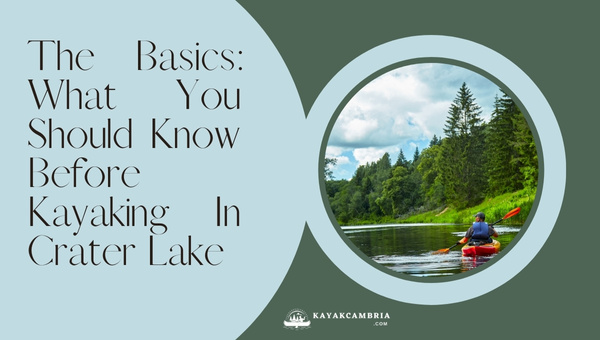
If Crater Lake beckons you for a splendid kayaking experience, it’s essential to be well-informed about the basics. So let’s discuss some necessary aspects of kayaking in this natural wonder.
1. Kayak Rental Options
You have two main choices for renting kayaks at Crater Lake — you can either bring your own kayak or rent one from various outfitters in the area. Although there are no on-site kayak rentals within the national park, several companies in nearby towns rent out kayaks, canoes, and other paddling equipment. Make sure to book in advance as availability is usually limited due to high demand during the peak season.
2. Necessary Permits And Regulations
Before setting out on a kayaking adventure in Crater Lake, it is important to obtain a backcountry permit from the park’s visitor center. The permit is free and enables park staff to monitor visitor usage of the park while ensuring the preservation of its fragile ecosystems. Additionally, familiarize yourself with the park’s unique regulations designed to protect its environment, such as a ban on using personal floatation devices within 200 yards of Wizard Island’s boat dock.
3. Safety Guidelines And Precautions
Safety should always be a top priority while kayaking in Crater Lake. Ensure that you are equipped with essential safety gear, including life jackets, whistles, and navigation tools. Be aware of the rapidly changing weather conditions and prepare for them accordingly. Moreover, it’s crucial to stay hydrated — the high elevation and brisk winds can quickly cause dehydration. Keep an eye out for possible hazards, such as submerged rocks and sudden changes in water depth. And, as always, never venture out alone; paddle in pairs or groups so that help is readily available if needed.
Preparing For Your Kayaking Adventure In Crater Lake
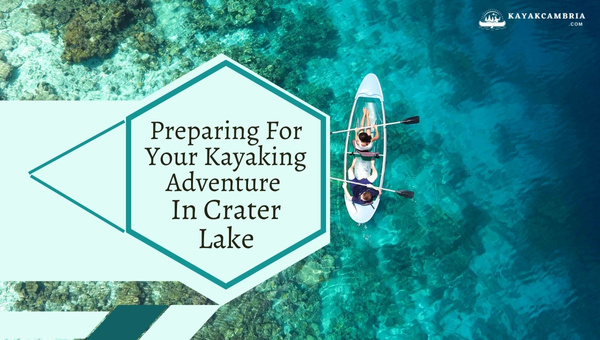
As with any outdoor adventure, preparation is key to enjoying a safe and unforgettable kayaking trip in Crater Lake. Here are some essential things to keep in mind as you plan for your journey on this majestic body of water.
Best Time Of Year To Kayak
Summer months (July-early September) are considered the prime time for kayaking in Crater Lake. During this period, the weather is usually pleasant, and the lake’s surface is mostly calm. Keep in mind that Crater Lake’s high elevation can make the water temperature quite chilly even in summer, so it is important to wear appropriate gear, such as a wetsuit.
Top Spots To Launch And Explore
- Cleetwood Cove: This is the only legal access point to enter the water in Crater Lake. A 1.1-mile (1.8 km) steep hike leads down to the cove, where you’ll find a boat ramp to launch your kayak.
- Phantom Ship Island: Make your way to this unique rock formation that resembles a ship, but be cautious, as the water around the island can be choppy and unpredictable.
- Wizard Island: Paddle towards the alluring volcanic cinder cone, and enjoy the opportunity to go ashore and explore its summit trail.
Tips For Experiencing Crater Lake’s True Beauty
- Be mindful of the wind: It’s essential to pay attention to weather conditions, as Crater Lake can have sudden wind gusts that may create waves and pose difficulties for kayakers.
- Stay near the shoreline: Paddling close to the lake’s edge (within 100 yards) is both a safety measure and an opportunity to marvel at the stunning caldera walls.
- Take frequent breaks: Kayaking at a high altitude can be tiring, even for experienced paddlers, so make sure you rest when needed and stay well-hydrated.
Remember, an incredible kayaking experience in Crater Lake depends on thorough preparation and understanding of the area’s unique conditions and features.
A Dose Of Adventure: Guided Kayak Tours In Crater Lake
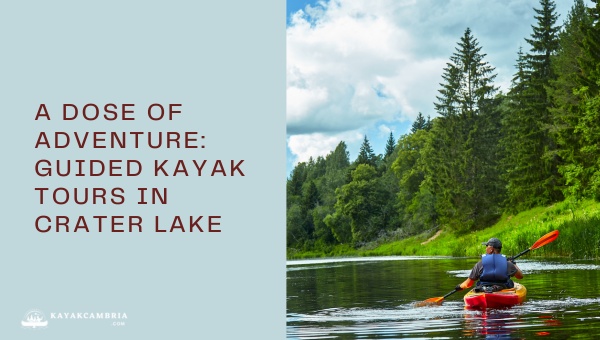
When planning a kayaking adventure in Crater Lake, opting for a guided tour can be incredibly beneficial. Not only do these tours offer a more immersive experience, but they also provide a wealth of information about the lake’s history, geology, and ecological significance.
The Importance Of Guided Tour Services
Guided tours give you an opportunity to learn from experts while enjoying the stunning surroundings of Crater Lake. Some of the key benefits of taking a guided tour include:
- Safety: Tour guides are experienced professionals who know the lake well, ensuring that you stay safe during your adventure.
- Education: The knowledgeable guides will provide insights into the unique ecology and geology of the area, making your trip all the more enriching.
- Navigation: Guides can lead you to the top spots to truly appreciate the beauty of Crater Lake, ensuring you don’t miss a thing.
- Conservation: By adhering to guided tour regulations, you’ll be supporting the efforts made by the National Park Service to preserve this pristine environment.
What To Expect On A Guided Kayak Tour
- Duration: Tours typically last 3 to 5 hours, giving you ample time on the water to explore the lake’s beauty.
- Group Size: Expect a smaller, intimate group size, enhancing the overall experience.
- Equipment: Kayaks, paddles, and life jackets will be provided, ensuring safety and comfort during the tour.
- Rest Stops: Regular breaks will be taken, allowing you to catch your breath, soak in the scenery, and partake in some on-the-water snacks.
- Wildlife Encounters: Your guide will point out wildlife sightings and explain the varied habitats found within Crater Lake.
Embarking on a guided kayak tour in Crater Lake is a remarkable experience that will leave you with unforgettable memories of your time spent paddling through one of nature’s most awe-inspiring treasures.
Crater Lake’s Unique Wonders: What To Look Out For While Kayaking?
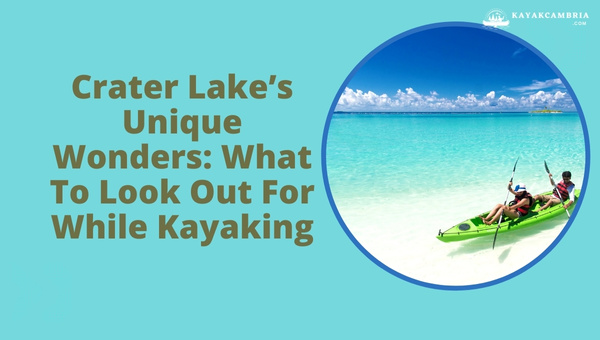
While kayaking in Crater Lake, I marveled at the breathtaking sights and unique wonders that surrounded me. From islands shrouded in mystery to enchanting natural phenomena, exploring Crater Lake offered an unforgettable experience.
Phantom Ship Island
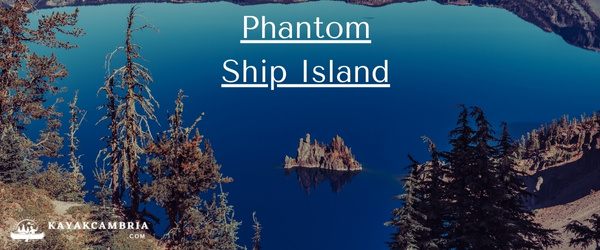
One of the first things that caught my eye during my kayaking adventure was the awe-inspiring Phantom Ship Island. As I approached this island, it was immediately evident where it got its name; its jagged rock formations resembled the outline of an ancient sailing ship. I paddled closer and discovered the island covered in vibrant green vegetation, offering the perfect home to many bird species.
Wizard Island
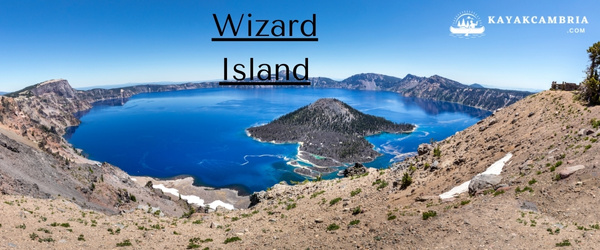
Another fascinating sight to behold in Crater Lake was the appropriately named Wizard Island. As I glided across the brilliant blue water, the distinct volcanic cinder cone of Wizard Island rose majestically above the lake’s surface, resembling a bewitched wizard’s hat. The island’s unique geological formation made my kayaking experience even more magical, leaving me in awe of nature’s power and beauty.
The Old Man Of The Lake
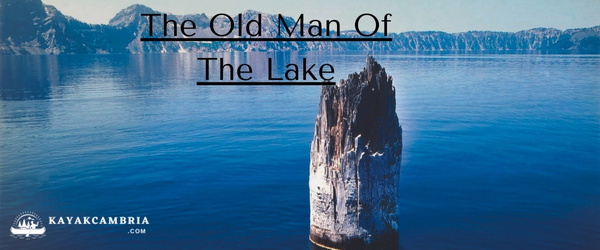
While navigating the tranquil waters of Crater Lake, I was lucky enough to spot one of its most peculiar and famous inhabitants: The Old Man of the Lake. This ancient and vertically floating tree stump has been bobbing around the lake for over a century, its location changing with wind and water currents. As I observed this natural wonder, I couldn’t help but think of it as a symbol of the lake’s timeless beauty and resilience.
Deep, Striking Blue Waters
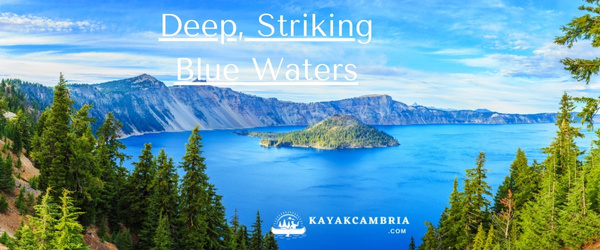
Of course, the highlight of kayaking in Crater Lake was the awe-inspiring, deep, striking blue waters. As I paddled through the crystal-clear water, it seemed to shimmer and change shades depending on sunlight and my viewing angle. This extraordinary color comes from the water’s depth and clarity, which allows for the absorption and reflection of sunlight. I felt as if I were gliding through a dream, surrounded by a pristine and otherworldly landscape.
With so many unique wonders to discover, kayaking in Crater Lake was truly a once-in-a-lifetime experience. I encourage every adventurer to embrace this opportunity to explore the many facets of Crater Lake’s beauty as these incredible sights are sure to inspire awe and create lasting memories.
Positive Environmental Impact: Leave No Trace Principles
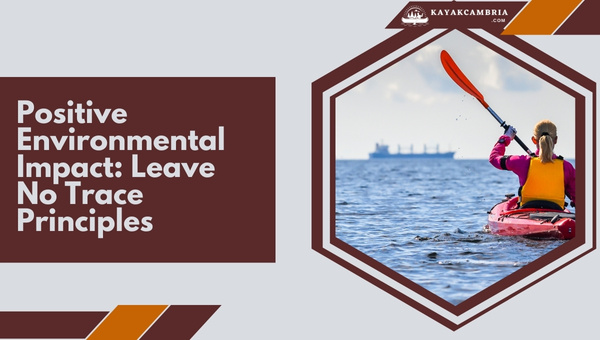
Preserving the National Park System requires the efforts of both visitors and park officials. One way to ensure the long-term sustainability of Crater Lake is to practice the Leave No Trace principles while kayaking and exploring this pristine environment. The following tips can help you minimize your impact and contribute positively to the protection of the park.
Plan Ahead And Prepare
- Research Crater Lake’s kayaking regulations and rental options beforehand
- Pack essential items, including biodegradable soaps and trash bags
Travel And Camp On Durable Surfaces
- Launch only from designated areas to reduce shoreline erosion
- Respect campsite restrictions if you plan an overnight stay
Dispose Of Waste Properly
- Carry a trash bag for disposing of litter, even if it’s not your own
- Practice proper human waste disposal techniques if restroom facilities aren’t available
Leave What You Find
- Resist the temptation to collect rocks, plants, or other natural items
- Refrain from carving initials or symbols into trees or manmade structures
Minimize Campfire Impact
- Use designated fire rings or portable camping stoves
- Keep fires small and never leave them unattended
- Observe fire restrictions and bans to prevent wildfires
Respect Wildlife
- Observe animals from a distance to minimize stress on them
- Avoid feeding wildlife, as it may disrupt their natural feeding cycles
Be Considerate Of Other Visitors
- Engage in quiet, non-intrusive activities while kayaking
- Yield to other watercraft and observe right-of-way rules on the lake
By adhering to these Leave No Trace principles, you can ensure that your kayaking adventure in Crater Lake is a positive and environmentally responsible experience.
Preserving Crater Lake: Wildlife And Ecosystem Concerns
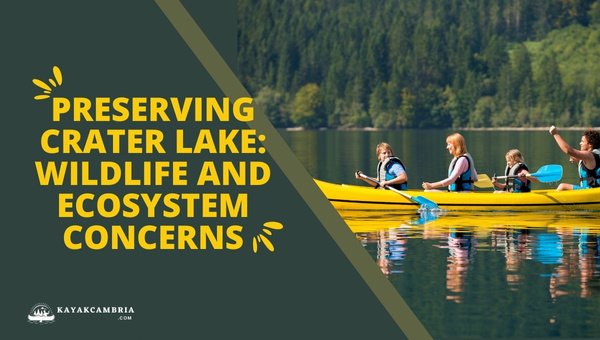
Crater Lake National Park is a unique ecosystem, fostering diverse plant and wildlife populations within its boundaries. As visitors, it is our responsibility to preserve and protect the park’s delicate balance. Please keep these concerns in mind when kayaking on Crater Lake:
Respecting Wildlife And Their Habitats
Whether you encounter a majestic bald eagle or a graceful deer while paddling through the pristine waters, remember to always maintain a respectful distance and observe from afar. Disturbing the natural behavior of these animals not only endangers their survival but also disrupts the overall balance of the park’s ecosystem.
Pro tip: Bring along binoculars for up-close observation, without disturbing the wildlife in their natural habitat.
Tread Lightly: Environmental Best Practices
In order to preserve the beauty and serenity of Crater Lake National Park, consider practicing the Leave No Trace Principles. These guidelines will help minimize your impact and contribute to the preservation of this natural treasure:
- Plan Ahead and Prepare: Know the park regulations, obtain necessary permits, and pack the necessary gear.
- Travel and Camp on Durable Surfaces: Stick to designated areas and established trails.
- Dispose of Waste Properly: Pack it in, pack it out. Leave nothing behind.
- Leave What You Find: This includes rocks, plants, and all-natural and cultural artifacts.
- Minimize Campfire Impact: Use a camp stove or designated fire rings, if available.
- Respect Wildlife: Observe from a distance, and never feed or approach them.
- Be Considerate of Other Visitors: Keep noise levels down and preserve the natural experience for everyone.
By incorporating these practices into your kayaking adventure, we can all work together to keep Crater Lake pristine and protected for future generations to experience and cherish.
Paddling In A Colorful Paradise: The Science Behind Crater Lake’s Stunning Hues
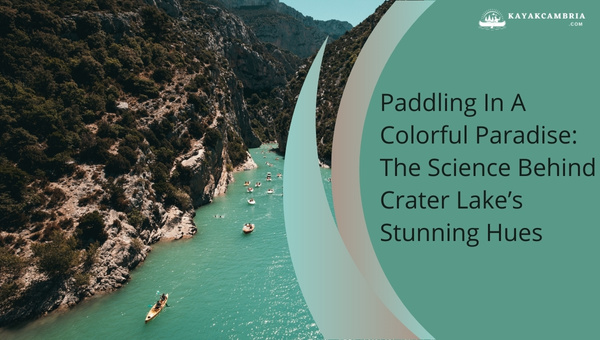
Crater Lake, renowned for its astounding shades of blue, provides a mesmerizing backdrop for any kayaking adventure. However, have you ever wondered what causes this brilliant color that sets it apart from other lakes? In this section, we take a look into the science behind Crater Lake’s dazzling hues.
Crater Lake owes its striking shades of blue to its incredible depth and purity. The lake’s depth reaches up to 1,943 feet (592 meters), making it the -ninth-deepest- lake in the world. This substantial depth allows sunlight to penetrate deep into the water, which then selectively absorbs different colors of the light spectrum.
As sunlight enters the water, the longer wavelengths of light, such as reds and yellows, are absorbed first, leaving only the shorter wavelengths like blues and greens to be scattered back to the surface. The result: the breathtaking shades of blue that Crater Lake is famous for.
This striking blue color is even more pronounced due to the exceptional clarity of the lake. Crater Lake is fed solely by precipitation, including rain and snowmelt, which means it bypasses the sediments and pollutants that typically flow through streams or rivers. With no inflowing rivers bringing additional minerals and dirt, the water remains remarkably -pure and clear-, allowing sunlight to penetrate even further.
When you are kayaking in the middle of this blue paradise, you might also come across another visual phenomenon: the deep blue waters contrasting with bright, turquoise shores. This color shift occurs when sunlight reflects off submerged rocks, sand, and algae near the shoreline, giving the water a stunning turquoise hue.
As you paddle through the tranquil waters of Crater Lake, make sure to take a moment to appreciate the captivating beauty of its many shades of blue. While the scientific explanation of the lake’s colors is fascinating, nothing compares to experiencing it firsthand – paddling through this colorful paradise truly makes for a mesmerizing and unforgettable adventure.
Conquering Altitude: Adjusting To Crater Lake’s High Elevation
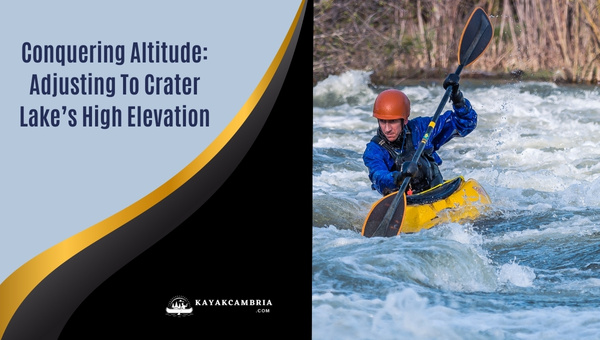
As if the breathtaking beauty of Crater Lake wasn’t already enough, this natural wonder also boasts an impressive elevation of around 6,178 feet (1,883 meters) above sea level. For many visitors, this can be a significant adjustment and could affect both your kayaking experience and your body. In order to make the most of your time on the water, it’s essential to be prepared for the altitude and take necessary precautions.
Acclimatization Tips
Before embarking on your kayaking adventure, it’s vital to give your body time to adapt to the higher elevation. Here are a few strategies to help you acclimate smoothly:
- Arrive early: Give yourself at least a day, if not more, to adjust to Crater Lake’s elevation before hitting the water. This will minimize altitude-related symptoms and help you feel more comfortable on the lake.
- Stay hydrated: Drink plenty of water regularly throughout your visit, as dehydration can exacerbate the effects of altitude sickness.
- Avoid alcohol and caffeine: Both alcohol and caffeine can promote dehydration, so keep their consumption to a minimum before and during your kayaking excursion.
- Pace yourself: When first arriving at Crater Lake, take it slow and avoid strenuous activities or intense paddling. Allow your body to gradually adjust to the higher altitude.
Identifying Altitude Sickness
While most visitors adjust to Crater Lake’s elevation without issues, it’s essential to recognize the signs of altitude sickness:
- Headache: A persistent headache not relieved by over-the-counter pain relievers could be an early sign of altitude sickness.
- Nausea and vomiting: Mild nausea and vomiting can be symptoms of altitude sickness but can also indicate a more severe condition if not managed properly.
- Fatigue: A lack of energy or extreme fatigue, especially when combined with other symptoms, may signal altitude sickness.
- Difficulty breathing: If you experience shortness of breath following mild exertion, it’s essential to take it seriously and consider seeking medical assistance.
Responding To Altitude Sickness
If you suspect that you or someone in your group is experiencing symptoms of altitude sickness, take action immediately to minimize complications:
- Rest: Encourage the affected individual to rest and minimize physical activity.
- Hydrate: Ensure they drink plenty of water to combat dehydration.
- Descend: If symptoms persist or worsen, descend to a lower elevation as soon as possible. In some cases, a few hundred feet of elevation change can make a significant difference.
- Seek medical help: If symptoms continue to worsen, don’t hesitate to obtain professional medical assistance.
By understanding Crater Lake’s high elevation and taking necessary precautions, you can ensure a satisfying and memorable kayaking experience with minimal disruptions.
Packing Essentials: What To Bring On Your Crater Lake Kayaking Trip?

When it comes to embarking on a kayaking adventure in Crater Lake, being adequately prepared is essential. With the unpredictable mountain weather, high elevations, and the need for self-sufficiency, packing the right gear can make all the difference. Here’s a list of must-have items to ensure a successful outing:
1. Personal Flotation Device (PFD)
Safety should always be a top priority when kayaking. A well-fitted PFD is a necessary piece of equipment to guarantee your security while on the water.
2. Kayak And Paddle
Bringing a suitable kayak is crucial for navigating Crater Lake’s waters with ease. A high-quality, lightweight paddle will make paddling much more enjoyable.
3. Paddle Leash
A paddle leash is an inexpensive but valuable item to keep your paddle secure and prevent it from drifting off in case of accidental drops.
4. Dry Bag
A dry bag is invaluable for keeping your belongings safe from water and moisture. Make sure you have at least one to protect your phone, camera, and extra clothing.
5. Appropriate Clothing
Prepare for changing temperatures and weather conditions by packing breathable, moisture-wicking layers, including a waterproof outer layer to shield you from sudden rains. Don’t forget a sun hat, sunglasses, and sunscreen to protect you from the sun’s rays at high elevations.
Bring a waterproof map and compass to help you navigate. In addition, a personal locator beacon (PLB) is an excellent investment in case of emergencies.
7. Hydration And Nutrition
Staying hydrated is especially important at Crater Lake’s elevation. Bring an ample water supply and a filter or purification tablets for emergencies. Pack high-energy, non-perishable snacks and a meal or two to keep your energy levels up.
8. First Aid Kit
A well-stocked first aid kit is an outdoor adventure staple. Include basics like band-aids, gauze, pain relievers, blister treatment, and any personal medication you may need.
9. Repair Kit
A repair kit can save the day when you encounter gear damage. Include items such as duct tape, zip ties, a multi-tool, and kayak-specific repair materials.
Remember, Crater Lake National Park is a remote area with limited resources, so self-sufficiency is vital. Ensure you have everything you need for a safe and enjoyable kayaking experience by packing thoughtfully and taking the time to double-check your gear before departure.
Connected To Nature: Disconnecting From The Digital World
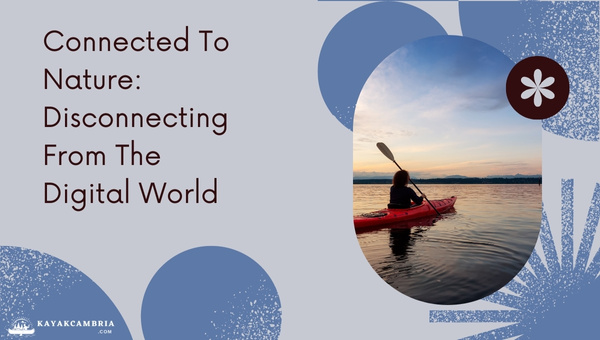
The True Value Of Unplugging
In our fast-paced, technology-driven world, it’s easy to lose touch with the natural world around us. Crater Lake offers the perfect opportunity to immerse yourself in nature and step away from electronic devices, allowing you to truly appreciate the beauty and serenity of this one-of-a-kind location. The simple act of disconnecting can have numerous benefits, including reducing stress, improving concentration, and promoting mental well-being.
A Digital Detox While Paddling
As challenging as it may seem at first, leaving your devices behind can lead to a more meaningful and immersive kayaking experience. Without distractions, you’ll be able to fully engage with the environment around you, making for a more rewarding paddling journey. Listening to the gentle lapping of water, spotting wildlife in their natural habitats, and admiring the vibrant blues of the lake is a treasure best experienced with your full presence and attention.
Mindfulness In Motion
Kayaking without modern gadgets encourages you to be mindful and present in the moment. This focus on the present can foster personal growth and offers the chance to develop a deeper connection with nature. As you paddle across the lake, you’ll be gently reminded of the power of the natural world, as well as your own place within that vast expanse.
Ways To Preserve Memories While Unplugged
Just because you’re disconnecting from technology doesn’t mean you can’t collect memories of your time at Crater Lake. Consider traditional methods, such as:
- Sketching what you see in a travel journal
- Writing descriptions of the scenery and how it makes you feel in a personal diary
- Using a disposable camera to capture snapshots of your adventure to develop later
Rediscovering The Joy Of Human Connection
Finally, experiencing Crater Lake minus the screens allows you to connect more deeply with your fellow kayaking adventurers. Sharing stories laughs, and moments of awe in a digital-free environment fosters genuine human connection and inspires you to be more present in your relationships.
Embracing the disconnection from the digital sphere in favor of nature’s beauty makes for a truly transformative experience while kayaking in Crater Lake. Trust me – this is an adventure you won’t want to spoil with constant notifications and social media updates!
Not Only Kayaks: Alternative Ways To Explore Crater Lake National Park

While kayaking is an incredible way to explore the breathtaking Crater Lake, it’s not the only method of taking in the park’s natural beauty. The national park offers a plethora of other activities to suit various interests and provide diverse perspectives of the area. Here are some alternatives to consider during your visit:
Hiking Trails With Breathtaking Views
Crater Lake National Park has over 90 miles of hiking trails for various skill levels. Some popular ones include:
- Cleetwood Cove Trail: This steep trail descends to the lake’s shore and is the only access point for swimming or catching a boat tour.
- Garfield Peak Trail: An intermediate hike that rewards you with stunning panoramas of the lake and surrounding landscapes.
- Watchman Peak Trail: Perfect for a late afternoon hike, reaching the summit presents you with an unforgettable sunset view.
Scenic Drives Around The Park
If hiking isn’t your style, Crater Lake offers two fantastic scenic drives:
- Rim Drive: A 33-mile loop around the caldera’s rim, with numerous viewpoints to stop, admire, and photograph the lake.
- Volcanic Legacy Scenic Byway: This 500-mile byway not only showcases Crater Lake but also explores the vast volcanic landscape of the region.
Educational Opportunities At Visitor Centers
Crater Lake has two visitor centers – the Steel Visitor Center and the Rim Visitor Center. Here, you can:
- Learn about the park’s history, geology, and ecology through interactive exhibits.
- Attend ranger-led presentations or guided walks to gain valuable insights.
- Participate in the Junior Ranger Program, which is an exciting experience for children.
No matter your preferred mode of exploration, Crater Lake National Park’s captivating wonders can be experienced in numerous ways. So whether you’re gliding on its cerulean waters or wandering through its lush, alpine forests, there’s an adventure waiting just for you.
Frequently Asked Questions
1. Do I need a permit to kayak in Crater Lake National Park?
Yes, you need a boating permit to kayak in Crater Lake. You can obtain a permit at the Cleetwood Trailhead parking area or online in advance. Visit the Crater Lake National Park website for more details on fees and permit requirements.
2. Are there kayak rental facilities within the park?
Although there are no kayak rental facilities within Crater Lake National Park itself, there are several nearby outfitters that rent kayaks and other paddle sports equipment. Be sure to reserve your kayak ahead of time during the busy season.
3. What are some must-see spots while kayaking in Crater Lake?
Some of the top spots to explore while kayaking in Crater Lake include:
1. Wizard Island: Accessible only by boat, this volcanic cinder cone provides stunning views of Crater Lake’s surroundings.
2. Phantom Ship Island: Enjoy a closer look at this fascinating rock formation that resembles a ship sailing through the water.
3. The Old Man of the Lake: A 30-foot tall tree stump that has been floating vertically for over a century.
4. What precautions should I take while kayaking in Crater Lake?
1. Wear a personal flotation device (PFD) at all times.
2. Always carry an emergency signaling device, such as a whistle or flare.
3. Check the weather forecast before you head out and be prepared for sudden changes in conditions.
4. Avoid kayaking alone in the park. It’s safer to have a buddy or join a guided tour.
5. When is the best time to kayak in Crater Lake?
The best time to kayak in Crater Lake is during the summer months (June to September), as the access road to the lake is typically closed from October to May due to snow. July and August offer the warmest and longest days, but they may be crowded as well. Always be prepared for cooler temperatures, even during summer months, due to the high elevation.
6. How do I comply with the Leave No Trace principles while kayaking in Crater Lake?
Here are some key tips to minimize your impact on the environment:
1. Avoid making loud noises or playing music. The natural sounds of the lake and surrounding wilderness should be appreciated and preserved.
2. Do not disturb the wildlife or natural features such as rock formations.
3. Properly dispose of trash and waste. Do not leave anything behind when you’ve finished your kayaking adventure.
4. Keep a safe distance from the shoreline to avoid impacting the delicate ecosystems that surround the lake.
7. Are there overnight kayaking trips available at Crater Lake?
Overnight kayaking trips are not allowed within Crater Lake National Park, as camping is prohibited in the immediate vicinity of the lake and on Wizard Island. However, there are several campgrounds within the park for visitors to enjoy, such as Mazama Campground and Lost Creek Campground.
Conclusion
As we reflect on our exploration of Crater Lake and the unforgettable kayaking experience it offers, we’re reminded of the unparalleled beauty and serenity this natural wonder holds. The deep, vividly blue waters, rich geological history, and pristine wilderness make Crater Lake an exceptional destination for outdoor enthusiasts seeking both adventure and connectivity with nature.
Whether you’re paddling solo, joining a guided tour, or exploring the park through alternative means, preparation is essential. Equip yourself with the right gear, permits, and knowledge of the park’s regulations to ensure a safe, enjoyable, and eco-friendly experience.
Create lasting memories at Crater Lake by capturing breathtaking views through photography and journaling about the moments that make your visit unforgettable. By disconnecting from the digital world and immersing yourself in nature’s beauty, you’ll be further inspired to protect and preserve Crater Lake National Park for future generations to admire.
Undoubtedly, a kayaking adventure in Crater Lake is the kind of trip that is bound to stay with you for a lifetime. We hope that our guide has provided you with sufficient information and encouragement to embark on your own journey to this captivating location. So grab your paddle, life vest, and a sense of adventure – and uncover the magic that awaits you at Crater Lake. Happy paddling!

